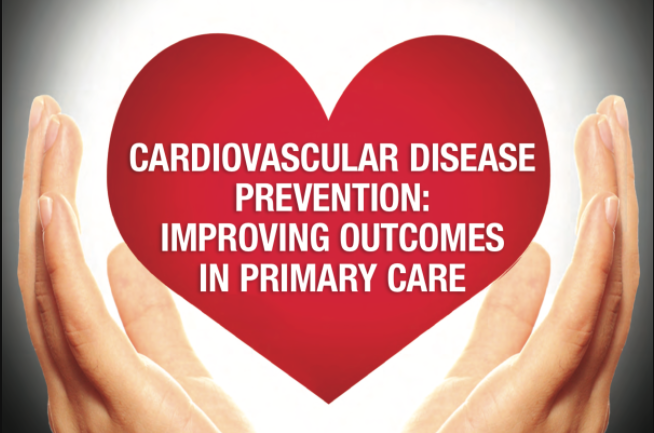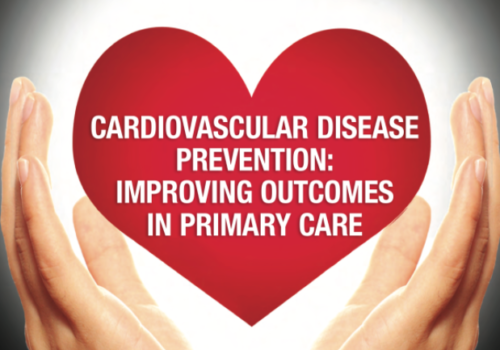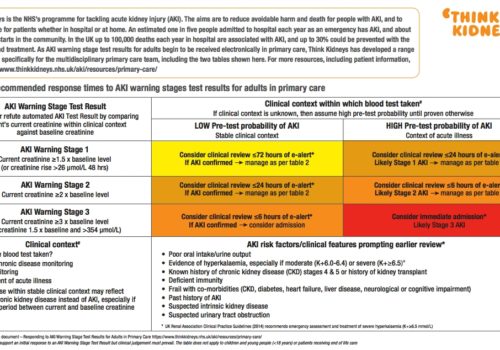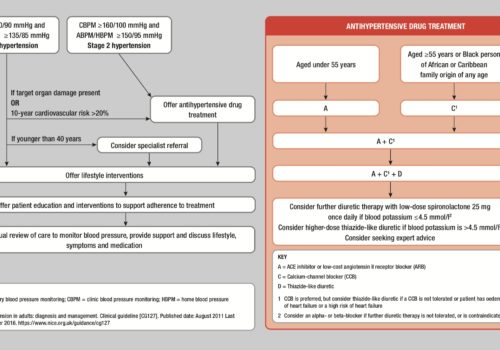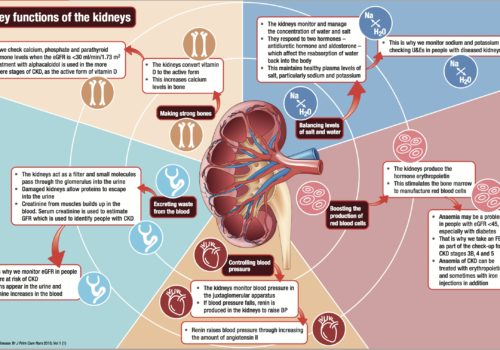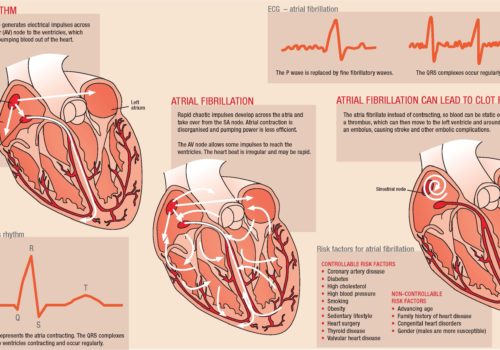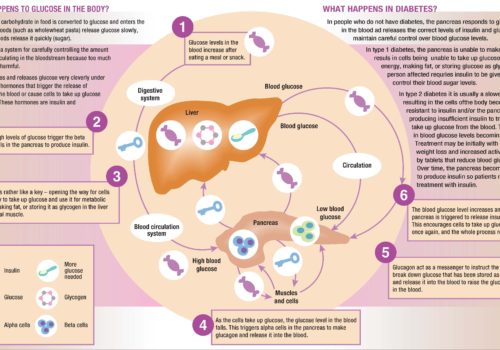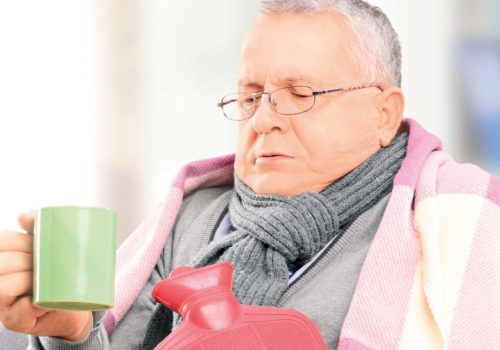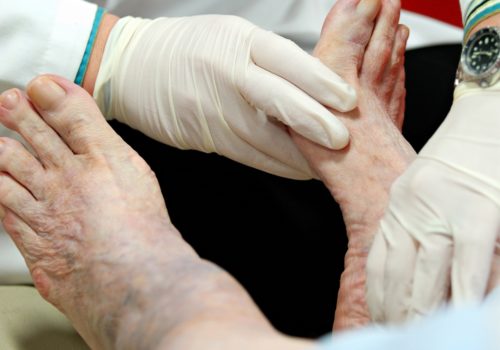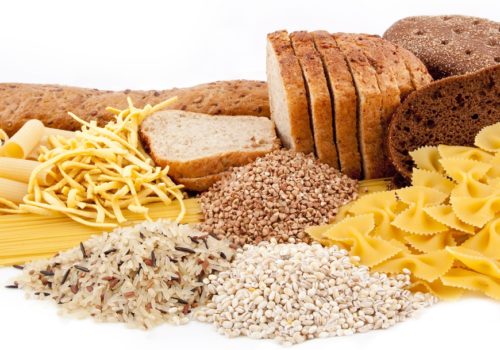Cardiovascular disease (CVD) remains a significant cause of disability and death in the UK, and it is also a key driver of health inequalities. The burden of CVD is set to grow substantially with the ageing population and increasing prevalence of overweight and obesity. So It’s time to get serious about prevention, both through population-level […]
Back to Basics: Acute kidney injury in primary care
About one fifth of people admitted to hospital each year as emergencies have acute kidney injury (AKI), and about two thirds of AKI starts in the community. These two useful wallcharts provide essential advice for GPs and practice nurses on how to recognise and respond to AKI in adults.
Back to Basics: NICE hypertension care pathway
This useful wallchart gives at-a-glance advice on diagnosis and treatment of high blood pressure in adults, based on the most recent hypertension guidelines from NICE.
Case study: Atrial fibrillation
This case study describes the diagnosis and management of atrial fibrillation (AF) in a 70-year old obese male who was referred for cardiac assessment after developing shortness of breath, which had worsened progressively over the previous three months. The case study highlights the role of thromboembolic risk reduction which is the cornerstone of AF management and which can only be achieved with proper anticoagulation.
Back to Basics: Key kidney functions
This month’s Back to Basics feature is a useful wallchart showing the five key functions of the kidney which include making balancing salt and water levels, making strong bones, boosting the production of red blood cells, controlling blood pressure and excreting waste from the blood.
Back to Basics: How atrial fibrillation develops
This month’s Back to Basics feature is a useful wallchart showing the differences between normal heart rhythm and atrial fibrillation. The chart also includes a list of controllable and non-controllable risk factors for atrial fibrillation.
Back to Basics: Glucose metabolism
This month’s Back to Basics feature is a useful wallchart focusing on the processes involved in glucose metabolism in the body, both in people with normal metabolism and those with types 1 and 2 diabetes.
Back to Basics: Planning the seasonal flu vaccination campaign
This month’s Back to Basics feature is a wallchart to support this year’s seasonal flu vaccination programme.
The vaccine is offered free on the NHS to adults over the age of 18 at risk of flu (including everyone aged 65 and over), pregnant women and children aged six months to two years at risk of flu.
Sponsored feature: Identification of malnutrition in COPD patients
People with COPD should be reviewed at least annually according to the Quality and Outcomes Framework. However, there is little mention of the importance of assessing nutritional status and no ‘QOF’ points for doing so. This article describes the assessment and management of COPD patients with a risk of malnutrition.
Dementia – the forgotten cardiovascular disease
In general, deaths from cardiovascular disease (CVD) are falling, except for the forgotten CVD, dementia. The rate of dementia is rising year on year and it is now one of the top 5 causes of death in the UK. Risk factors for dementia are similar to other CVDs and risk modification can reduce the risk of development of the condition.
A guide to the diabetic foot check
The annual diabetic foot check plays a vital part in the support and education of people with diabetes. This can be performed easily and with minimal expense, but despite the NICE recommendation (NG19) that everyone with diabetes should have a foot check at least once a year, Diabetes UK reports that up to 400,000 people are not having this performed.
The role of carbohydrates in a healthy diet: part 2
This article provides an in-depth look at the role of carbohydrates in obesity, impaired glucose regulation and type 2 diabetes. Foods containing carbohydrates are an important part of a healthy diet for both the general population and those with, or at risk of, type 2 diabetes and cardiovascular disease. However foods and drinks high in ‘free sugars’ should be restricted.

